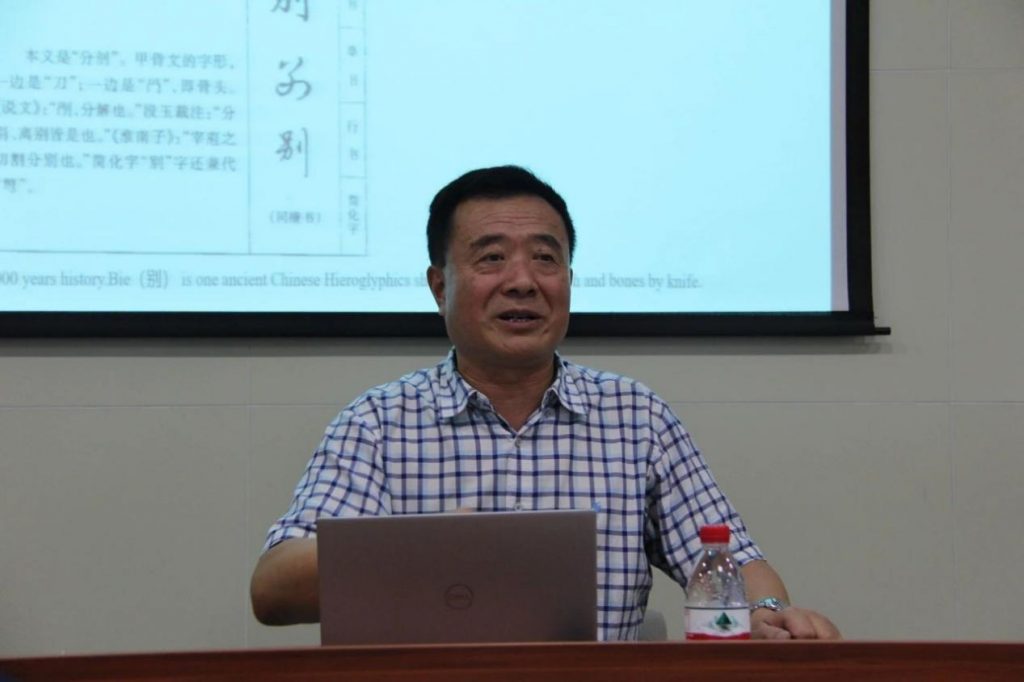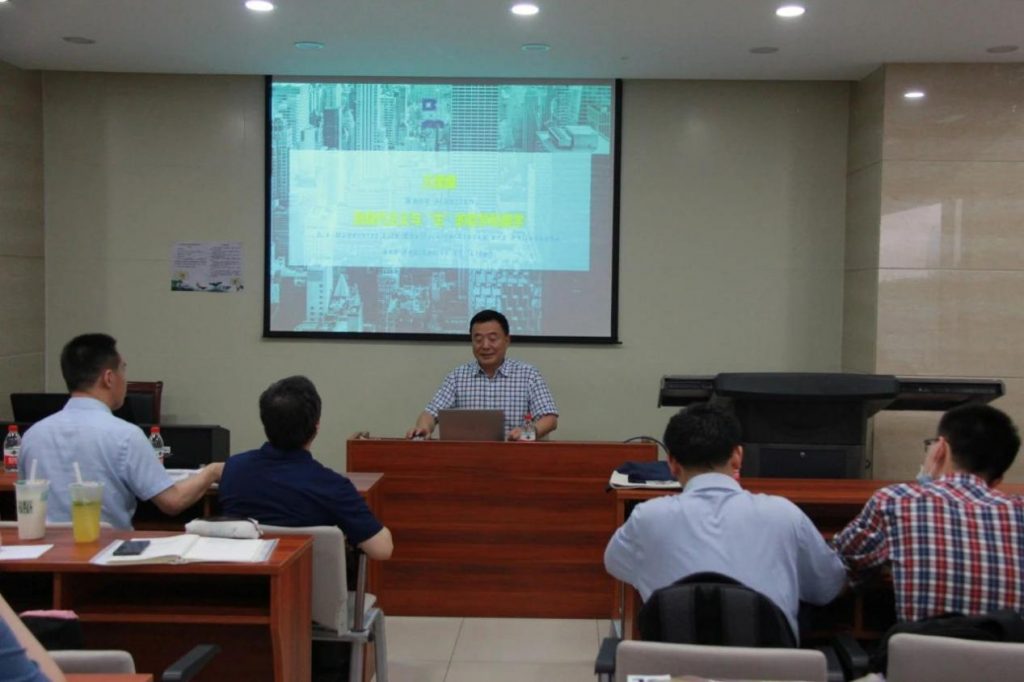Bie-Modernism and the Philosophy and Aesthetics of ‘Life’
On the evening of June 29, 2021, Wang Jianjiang, a second-level professor and doctoral supervisor of the School of Humanities of Shanghai Normal University, was invited to be a guest at the Literary and Art Aesthetics Research Center, and brought an academic lecture entitled “Bie-Modernism and the Philosophy and Aesthetics of ‘Life'” . The lecture was presided over by Professor Tan Haozhe, Director of the Center. Professor Cheng Xiangzhan, Deputy Dean of the School of Arts, Deputy Director of the Center, Professor Hu Youfeng, Professor Yang Jiangang, and more than 20 master and doctoral students attended the lecture.
Before the lecture, Prof. Tan Haozhe summarized the current situation of the academic world with “anxiety of influence”, and believed that Wang Jianjiang’s theory of “Bie-modern” was an important achievement of Chinese contemporary aesthetic circles to overcome anxiety and to showing themselves. And this try has achieved considerable international influence.
Afterwards, Wang Jianjiang presented three masterpieces of “Bie-Modern: Space Encounters and Time Spans”, “Bie-Modern: Discourse Innovation & International Academic Dialogue” and “Bie-modern: Art and Philosophy” to the Literary Aesthetics Research Center.
At the beginning of the lecture, Wang Jianjiang first introduced the emergence and development of the theory of Bie-modernism. The theory of Bie-modern was formally proposed in 2014, and it has attracted the attention and discussion of academic circles at home and abroad since then. Bie-modern theory includes two aspects: description of the status quo of Bie-modern society and theoretical proposition of Bie-modernism. The status quo of Bie-modern times is that the underdeveloped third world countries in the world have formed a mixed status quo of modern, pre-modern and post-modern, which is completely different from the linear and staged development of the West. Bie-modernism is not satisfied with the mixed state of Bie-modern, but to update and transform it.
First, if we look at the status quo of Bie-modern and Bie-modernism together, the “Bie” of Bie-modern theory is the meaning of distinction, and Bie-modernism is the theoretical proposition of distinguishing between true and false modernity and establishing true modernity.
Secondly, Bie-modern theory has created a series of categories, including Bie-modern, Bie-modernism, Bie-modernity, life equity theory, etc. The related theories proposed by Western scholars that are triggered by these theories include Aleš Erjavec’s “philosophical quadrilateral theory” and the “philosophical moment” theory relayed by Rok Benčin.
Thirdly, Bie-modernism’s Life Equity (Life Stocks) theory is closely related to life aesthetics, ecological aesthetics, life aesthetics, life aesthetics, and somaesthetics. The Life Equity theory is that people are born with wealth until the end of their lives. This wealth can only be enjoyed for life and cannot be traded like wealth shares. First, all life and the philosophies and aesthetics that study them must first be founded on existence. Second, life needs the protection of wealth, and it is impossible to survive without wealth, and so does aesthetics. Third, Life Equity is the fundamental guarantee for getting rid of slavery, personal freedom, and personality independence. Finally, from the perspective of the relationship between Life Equity and human happiness and beauty, Life Equity is the premise and foundation of human happiness and beauty, while its absence is the source of human misfortune, injustice, anxiety, and pain. In today’s China, establishing the concept of Life Equity and implementing and fulfilling human Life Equity is not only the task of law or economics, but also the object of ethics and aesthetics.
During the question-and-answer session, the students asked Wang Jianjiang about the differences between Eisenstadt’s concept of “multiple modernity” and bie-modern concepts, the aesthetic expression of the concept of Life Equity for personal survival, and how aesthetic research can be further integrated with “life”. Prof.Wang answered patiently and meticulously.
Finally, Professor Tan Haozhe believes that this lecture is rich and cutting-edge, and there are three main inspirations: First, the issue of aesthetics is closely related to the right to life in the abstract sense and the right to life assigned by the society in essence. This problem can also be gradually extended to the basic problem of aesthetics from the large social context. Secondly, he believes that the construction of a theoretical system needs the support of concepts and categories, and the Bie-modern theory is a good demonstration. The third point is that we are in an era of “big changes unseen in a century”, and people’s spiritual world also changes accordingly, and it is such psychological issues that aesthetics, cultural studies and other related disciplines are concerned about. The question of aesthetics cannot be separated from the foundation of existence, but it is not the same as this foundation. Therefore, around the related categories of “survival”, and then to the issue of aesthetics, some transitional hierarchical sequences are still needed in the middle. The lecture ended with warm applause.


